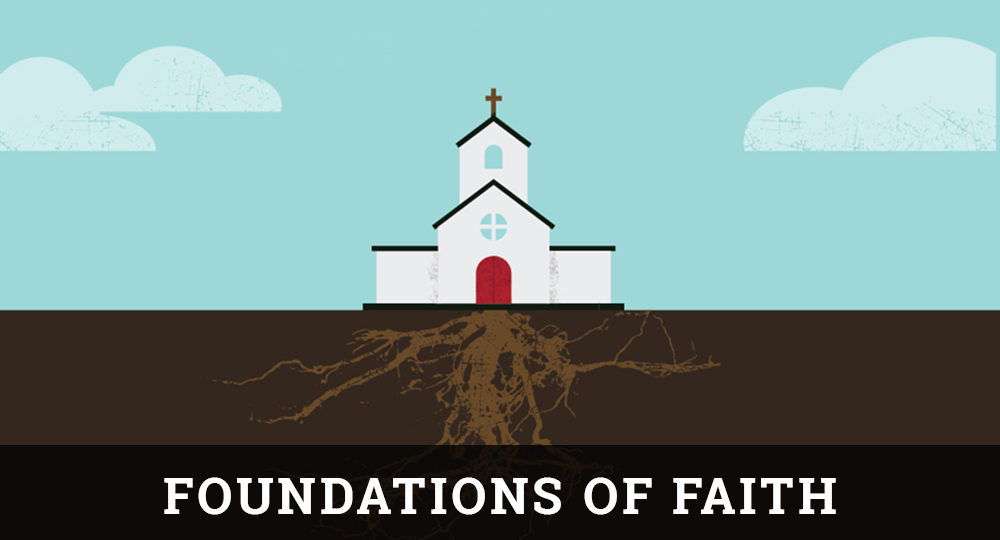God is Sovereign Conclusion
The Seventy Weeks of Daniel
The previous article examined several biblical indications that God is sovereign over time. One of the most significant indicators of God’s sovereignty in that sphere is His amazing seventy-weeks prophecy delivered to Daniel in 538 B.C.1 and recorded in Daniel 9:24–27. (See chart on page 30)
Israel and Jerusalem. The entire prophecy concerns Daniel’s people (Israel) and their holy city, Jerusalem (v. 24).
Furthermore, the amount of time the prophecy covers is 490 years. The angel Gabriel told Daniel that God had decreed “seventy weeks” (literally, seventy sevens) for Israel and Jerusalem (v. 24). Daniel and the people of Israel would have understood this time to be seventy periods of seven years, or 490 years.
God had divided their calendar into seven-year periods, with every seventh year being a sabbatic year (Lev. 25:1–9). In addition, they were in their Babylonian Captivity for seventy years because they had violated seventy sabbatic years over the course of 490 years (2 Chr. 36:20–21).
The Starting Point
Gabriel revealed that the starting point of the 490 years would be the issuing of a decree to restore and rebuild Jerusalem (v. 25). Two features must be noted concerning the Daniel 9:25 decree. First, the decree would permit the rebuilding of “the street” and “the wall.” Second, it would initiate a period of 483 years.
The Rebuilding. The word translated “the street” refers to the broad open space, or plaza, just inside a city’s gates— the space that was the center of city life.2 A city does not have gates unless it has a wall. Thus the construction of a plaza necessitated the construction of a city wall. The word translated “the wall” refers to a trench, or moat, designed for the defense of a city.3 It was common for walled cities to dig deep moats around their walls as part of their defenses.4
Together, the terms plaza and moat indicate the building of a city’s defenses, including a wall with gates and a moat. Thus the decree of Daniel 9:25 permitted the rebuilding of Jerusalem’s defenses, including the rebuilding of its wall and moat.
The Time Frame. Second, the decree’s time of issue would initiate a period of sixty-nine sevens of years (sixty-nine times seven, or 483 years) that would end when the Messiah would be present in the world.
The only decree related to the rebuilding of Jerusalem that corresponds with these two characteristics of the Daniel 9 decree was the one issued by King Artaxerxes to Nehemiah in March–April (Hebrew month of Nisan) 445 B.C. (Neh. 2:1–8). Earlier Nehemiah had received word that Jerusalem’s wall was still broken down (Neh. 1:1–3). Nehemiah was so disturbed by this sad news that Artaxerxes consoled his servant by issuing the decree permitting the wall to be rebuilt.
In addition, that was the only decree issued late enough to start the 483-year period, which would end when the Messiah would be present in the world.
Therefore, the starting point of the 490 years of the prophecy in Daniel 9 was March–April 445 B.C.
Pinpointing Messiah’s Presence on Earth
Another significant feature of the Daniel 9 prophecy is that it pinpoints exactly when the Messiah would be present in the world (v. 25).
Gabriel said that from the issuing of the decree unto Messiah the Prince would be sixty-nine sevens of years (sixty-nine times seven, or 483 years). In other words, 483 years after March–April 445 B.C. the Messiah would be present in the world.
Computing the Years. When did the 483 years end? In computing the data provided by Gabriel, it is important to keep in mind that in ancient times people reckoned a year at 360 days.5 The Bible followed that ancient system. (Note Genesis 7:11, 24; 8:4, where five months contain 150 days, and Revelation 11:2–3; 12:6, 14; 13:5, where forty-two months, or three and one-half years, contain 1,260 days.)
Thus the 483 years between the issuing of Artaxerxes’ decree and the designated time in the Messiahs’ life would amount to 173,880 days (483 years times 360 days).
Starting with Artaxerxes’ decree in March–April 445 B.C., the addition of 173,880 days brings one to March–April A.D. 32—the end of the 483 years, when something significant would happen in the Messiah’s life on Earth.6 What was that significant event?
Messiah’s Presentation. When referring to the end of the first 483 years, Gabriel said, “unto the Messiah, the Prince” (Dan. 9:25). The word translated “Prince” refers to “the king-designate as the one chosen and appointed by God to rule his people Israel.”7
It would appear that Gabriel had in mind the time (March–April of A.D. 32) when the Messiah would officially present Himself to Israel as its king-designate, the one chosen and appointed by God to rule Israel. Zechariah 9:9 foretold that Israel could identify its future king in the following manner: He would come to Jerusalem mounted on the foal of a donkey.
When Jesus made His triumphal entry into Jerusalem on the foal of a donkey, the crowd recognized the significance of that event, for it called Him “King” (Lk. 19:37–38). As Jesus approached Jerusalem, He wept over the city:
If thou hadst known, even thou, at least in this thy day, the things which belong unto thy peace! But now they are hidden from thine eyes (Lk. 19:42).
He warned Jerusalem that it would suffer great disaster because it “knewest not the time of thy visitation” (v. 44). Jesus’ language indicated that God had marked out that specific time for Jerusalem to be visited by her divinely designated King, the Messiah. It also indicated that Jerusalem should have recognized the significance of that time because several centuries earlier, in Daniel 9:25, God had revealed when the Messiah would present Himself to Israel as its divinely designated King.
Messiah’s End. The Daniel 9 prophecy also specifies that at the end of the first 483 years, the Messiah would be “cut off” (v. 26). The word translated “cut off” was used for the death penalty (Lev. 7:20–21, 25, 27) and often referred to a violent death (1 Sam. 17:51; Obad. 9; Nah. 3:15).8
Thus Gabriel revealed that the Messiah would be cut off with a violent death after He presented Himself to Israel as its designated king.
Only Jesus Fits the Prophecy
It is historical fact that Jesus was crucified several days after His triumphal entry into Jerusalem. But does the chronology of the New Testament indicate that both His presentation of Himself to Israel as its designated King and His crucifixion several days later took place in the spring of A.D. 32, in line with the Daniel 9 prophecy concerning the Messiah?
Two chronological items in the New Testament shed light on the time of Jesus’ triumphal entry and death: the reign of a secular ruler and the Jewish holiday of Passover.
Tiberius’s Reign. Luke declared that John the Baptist began his ministry in the fifteenth year of the reign of Tiberius Caesar (Lk. 3:1–3). Several ancient writers indicated that Tiberius began his reign in A.D. 14; therefore, the fifteenth year of Tiberius’s reign would have been A.D. 28.9
John’s statements near the beginning of his ministry may indicate that he began his ministry in the spring.10 Thus John may have begun his ministry in the spring of A.D. 28. Since John had an established ministry before he baptized Jesus (Mk. 1:4–9), it is probable that Jesus was baptized and began His ministry late in the fall of the same year.11
Epiphanius, a church bishop on Cyprus during the fourth and fifth centuries, declared that Jesus was baptized in November of A.D. 2812 and Jesus’ ministry covered four Passovers.13 Since the first Passover of His ministry would have been in the spring of A.D. 29, the fourth Passover would have been in the spring of A.D. 32.
Since Jesus was crucified in conjunction with the last Passover of His ministry, this would mean that He made His triumphal entry and died in the spring of A.D. 32. In the fourth century Bishop Epiphanius indicated that Jesus died in the spring of A.D. 32.14
The Passovers. During the first Passover of His ministry, Jesus cleansed the second Temple (Jn. 2:11–16).15 On that occasion the statement was made, “Forty and six years was this temple in building” (Jn. 2:20). That statement referred to the forty-sixth year of a massive building project instigated by Herod the Great but not completed until A.D. 64.16 Herod began that building project in 18 B.C. 17 Beginning with 18 B.C., the forty-sixth year would be A.D. 29. (There is only one year from 1 B.C. to A.D. 1.)
Thus the first Passover of Jesus’ ministry was in the spring of A.D. 29, and the fourth Passover would have been in the spring of A.D. 32. Since Jesus was crucified in conjunction with the last Passover of His ministry, He must have made His triumphal entry and died in the spring of A.D. 32.
New Testament chronology corresponds with the chronology of the Daniel 9 prophecy. It thereby demonstrates that Jesus of Nazareth is the Messiah spoken of by Gabriel in Daniel 9:25–26. Only He experienced what the Daniel 9 chronology revealed the Messiah would experience in the spring of A.D. 32.
The accurate, chronological fulfillment of a precise chronological prophecy that God revealed over five centuries earlier demonstrates that God is sovereign over time.
ENDNOTES
- Leon Wood, Commentary on Daniel (Grand Rapids: Zondervan, 1973), 232.
- James A. Montgomery, The Book of Daniel (New York: Charles Scribner’s Sons, 1927), 380.
- Albert Barnes, Notes on the Book of Daniel (London: George Routledge & Co., 1853), 143.
- Ibid., 139.
- Paul Couderc, “Calendar-Year,” The Encyclopedia Americana, 1969, 184.
- Sir Robert Anderson, The Coming Prince (Grand Rapids: Kregel, 1954), 122, 128.
- Kenneth T. Aiken, “nagid,” New International Dictionary of Old Testament Theology & Exegesis, ed. Willem A. Van Gemeren (Grand Rapids: Zondervan, 1997), 3:20.
- Edward J. Young, The Prophecy of Daniel (Grand Rapids: Eerdmans, 1970), 206.
- Renald E. Showers, “New Testament Chronology and the Decree of Daniel 9,” Grace Journal, 11, no. 1 (1970): 31–32.
- W. M. Ramsay, Luke the Physician (New York: A. C. Armstrong and Son, 1908), 227–228.
- Jack Finegan, Handbook of Biblical Chronology (Princeton: Princeton University Press, 1964), 259, 392.
- Ibid., 253.
- Ibid., 283.
- Ibid., 253.
- G. Ogg, “Chronology of the New Testament,” The New Bible Dictionary, 1962, 224.
- S. A. Cook, F. E. Adcock, and M. P. Charlesworth, ed., The Augustan Empire, 44 B.C.—70 A.D., The Cambridge Ancient History (Cambridge: The University Press, 1963), 10:331.
- W. Shaw Caldecott, Herod’s Temple (London: Charles H. Kelly, n.d.), 15.







